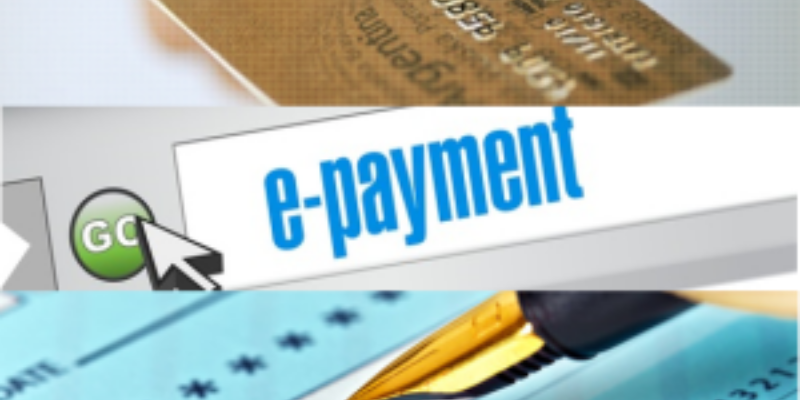Contact Sales (402) 933-4864
Contact Sales (402) 933-4864
Written by: Kurt Matis

Many people want to achieve 'straight-through processing' (STP), but what does that really mean?
As we’ve pointed out in previous posts, STP is considered by some to be the “Holy Grail” or even “manna from heaven” for corporate treasurers, and we believe rightly so. Imagine being able to keep your internal resources focused on the highest value functions and exceptions while automated business rules streamline everything else. Imagine how different your accounts receivables (AR) operations would look when you have the full confidence that your FTE resources are maximizing every interaction they have. It's easy to forget sometimes, but each time one of your team members has to look at a payment, it costs you money!
In this post, we'll address the origin and definition of STP and how companies can work towards achieving true straight-through processing within their AR operations.
Background
STP was coined by James Karat in the 90’s to describe automated processing of transactions. In essence, it’s the ability to process and post a transaction without manual data entry (i.e. human involvement). As we’ve already identified, the more human ‘touch points’ a transaction requires along the way, the more cost there is involved in processing the transaction—as well as a greater chance for error. So, to boil it down, STP is used to increase efficiencies, lower operational risks, and reduce costs.
So Why Doesn’t Everyone Move to STP?
Good question, but the answer isn’t so easy. There are several reasons many companies struggle to incorporate STP whether in a single portion of their receivables operations, or in all of them. From a B2B or B2C payment perspective, the most efficient way to achieve STP would be to have clients’ payments automatically processed (‘auto-pay’) when invoices come due. This could be done by storing clients’ ACH or credit card information on a PCI-compliant platform that could process these transactions based on agreed payment terms. Automated reminder emails could be sent several days prior to the transaction, notifying the client that their payment will processed on a specified date. Finally, email notifications and/or receipts could be sent to the client after the transaction has been successfully processed. Unfortunately, many clients are still reluctant to have a business hold their banking and credit card information. While this is changing, it can still present a potential roadblock.
In addition, while payment by check continues to fall for consumer payments, B2B payments continue to see these types of payments holding steady. According to the 2017 CRF/NACHA Payment Benchmark Survey, still account for roughly half of all B2B payments. In many industries, the reason being that remittance documents are sent out to the client and asked to be returned with the payment for proper processing and posting. By doing this, businesses inherently encourage clients to pay by check. Furthermore, in many industries, this may mean multiple remittance documents can be sent in with a single check (i.e. distribution industry) or even completely different remittance documents coming in at the same time from different campaigns (i.e. non-profit industry). A system that can scan single and multiple checks as well as single and multiple remittance docs with the checks, is a first step in streamlining the process. This becomes even more important when there are disputes and/or partial payments (which can be a headache for AR and credit departments).
Another reason is that in many industries, antiquated CRM, accounting/ERP and processing systems don’t have payment features, or if they do, they are limited. Even worse, if they’re not PCI compliant then the business could have enormous risks in credit card processing. These systems likely have limited posting functionality as well and won’t be able to interface to multiple systems for the support of multiple payment methods and channels (check, ACH, card, online, mobile, etc.).
For instance, it is not uncommon for legacy systems to force companies to only be able to process ACH transactions on the 15th or last day of the month. If a client wanted to pay on the 1st day of the month, that client was out of luck. This doesn’t promote customer-centricity and operational flexibility, this promotes the fact that your business is handcuffed by out-of-date technology and therefore you, and your customers are forced to endure the pain and inefficiencies. With the constant advances in payment processing technology, don’t be surprised when your clients don’t put up with this for long. Many things in life are difficult, making a payment shouldn’t be one of them.
Many of the aforementioned legacy systems are still run ‘on-premise’ which requires costly updates and ongoing enhancements. Not to mention additional costly overhead to keep resources on staff to maintain these systems.
For corporations, using cloud-based, Software-as-a-Service (SaaS) integrated receivables solutions means eliminating all costs related to having to manage hardware and software on site. With a SaaS solution, you simply have a small applet on your computer or mobile device that lets you securely connect to the application. This method also ensures you always have the newest software version in real-time, no laborious system updates necessary. SaaS offers extremely quick and easy deployment of your integrated receivables solution throughout your enterprise with minimal up-front costs and no infrastructure investments.
For financial institutions, leveraging a SaaS solution eliminates the need to install and/or manage complex hardware and software for each customer, enhancing their customers’ experiences. It allows easy, quick and remote deployment and support of an integrated receivables solution to their customers via the small applet that lets customers securely connect to the application. Additionally, financial institutions can rest assured that SaaS gives them and their customers the appropriate levels of security and compliance, particularly PCI.
What About Online Payments…Shouldn’t Every Business Be Accepting Payments Online by Now?
Well, yes…and no. There are plenty of reasons many companies still do not accept payments online, and they are as varied as the businesses themselves. Some lack the inside technical expertise to build or support an online payment component. Others don’t want to take on the risks of credit card payments and the PCI costs and requirements that accompany those payments. Many aren’t sure if their customers would utilize the web to pay, so their hesitant to invest a lot of financial resources not knowing if there will be an ROI on that investment (build it but will the customers convert?). These arguments can be mirrored for mobile payments as well.
But the fact remains that many of our consumer habits and preferences find their way into our business habits and preferences. Making payments online and via mobile applications will prove to be no different. In fact, according to recent research from Forrester, the U.S. B2B eCommerce market will reach $1.2 trillion by 2021—up from $889 billion at the end of 2017. Across many industries this shift is already underway. Traditionally check-heavy industries like distribution and insurance are already successfully transitioning to new, efficient, user-friendly online and mobile payment applications.
What’s more, online payments present another great path to STP for businesses. For example, if your business presents customers with open invoices for payment, today’s leading integrated receivables platforms include robust electronic invoice presentment and payment (EIPP) capabilities that allow your customers to securely login to an online payment portal to view and pay their open invoices by either ACH or credit card (dependent on your business requirements).
By allowing customers to select the invoices they want to pay, your company will have the benefit of already having that payment associated with the correct remittance information. No manual intervention necessary. This information can be consolidated into a single file that is delivered automatically for posting and cash application purposes to your back-office system at the end of each day. If necessary, this type of data should also be available via real-time integrations as well. This creates new operational efficiencies and allows your internal AR or accounting resources to focus on higher-value functions, while also giving your customers new, easy-to-use, self-service payment options.
So How Can Companies Achieve STP?
Strategically and methodically. What we mean by this is that companies shouldn’t try to fix all its payment processing problems all at once. Instead, focus on your biggest pain points and then continue adding new integrated features to allow yourself a gradual path to straight-through processing. After all, you didn’t create the patchwork quilt of disparate systems your dealing with overnight, don’t force yourself into some one-size-fits-all miracle solution that will only make things worse.
For instance, when a client is handling thousands of checks and remittance documents each month, it doesn’t make a lot of sense to talk about migrating those to online or mobile payments right away. The best thing is to streamline the scanning and posting of those documents to eliminate the manual processing taking place today. Once that is completed, you can look to setup clients on automatic ACH or credit card payments and then migrate to online or mobile payments. On a unified, truly integrated platform, since all the invoices, ACH and credit card information is in a single database, the information can be viewed seamlessly in the corporate environment, online interface, or via a mobile device. This allows a global overview of the transactions and a single point of integration into the client’s back-office accounting, ERP, or CRM system(s).
Furthermore, today’s leading integrated receivables platforms include a full-host of API’s & SDK’s, making the addition of online and mobile payment capabilities within a client’s own applications or interfaces easier, more secure, and more affordable than ever before. Adding this functionality within products and services your customers are already familiar with can increase adoption significantly. And being able to implement these services at a much lower cost and reduced deployment time can increase the ROI for offering these services to your customers. Of course, your customers may not fully migrate to online payments the first day it’s offered, but over time many will like the convenience of these services. The key is to give it time and perhaps even strategically incent them to utilize the service.
In the end, while there may be no silver bullet for achieving STP within your AR operations, there are technology providers who can help you on you journey to achieving this “Holy Grail” of receivables. Whether you are accepting high volumes of checks or looking to make the transition to online or mobile payments, STP requires a commitment to the strategic (and most times gradual) consolidation of legacy payment processing systems and operational processes. Choosing the right partner and supporting platform to help you embark upon this journey is of the utmost importance. Choose wisely.
Discover how Shamrock Foods has achieved straight-through processing on a single, truly integrated receivables platform.

Part 1 of the 3-part True Straight Through Blog Series Here at FTNI, we’ve been in a lot of...
Read More
For a growing number of banks, the accelerating demand for integrated receivables solutions, and...
Read More
Remote deposit capture (RDC) of checks has many benefits—not least, reducing the manual labor...
Read MoreFinancial Transmission Network, Inc.
13220 Birch Drive, Suite 120
Omaha, NE 68164
Sales: +1 (402) 933-4864